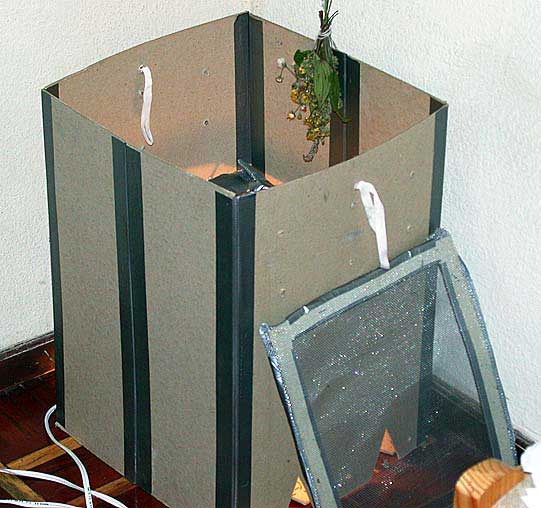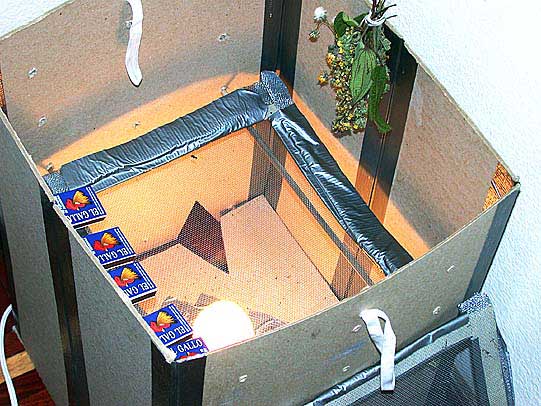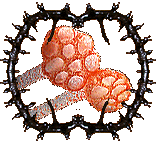Tropical field work is not in principle different from work in temperate areas, but especially the high humidity in many areas make it even more important to use a safe system to obtain dry specimens, that can be kept as such!
A kerosene lamp can be a sufficient heat source for the effort of one or two persons, if it is placed at the bottom of an “apparatus” that could consist of thin plywood or even thinner, hard cardboard with a couple of shelves of wire mesh. If electricity is available the lamp can be replaced with a bulb.
A simple dryer . . .

made of cardboard with an electrical bulp as heat source. The whole thing
can fold, so it can be fit into a backpack.

The three shelves are made of fine metal mesh supported by thin wooden
sticks.
Crisp (not roasted!) specimens are stored in zip-bags within bigger bags. Silica gel can be added, but if decent bags are used and the specimens really are dry it is not necessary.
Some fungi are surprisingly difficult to dry, fx specimens of some stromatic pyrenomycetes (fx Daldinia). These fungi are constructed so that they can with held water for prolonged periods. Such specimens should be split with a sharp knife in order to speed the process of drying up. Also very fleshy agarics and big polypores may have to be cut into smaller and thinner pieces in order to secure a good drying process.
Although several tropical mycologists have advocated wet collections (70 % alcohol with or without additives), we can not recommend it, since all to many herbaria fail to curate such material in a proper way, and when dried out, such material becomes nearly useless.
It is essential to make good descriptions, preferably using a good colour coding system (this can be difficult to obtain) and a good photograph is of great value, esp. for all fleshy fungi. Whenever possible it is recommended to try to obtain spore deposits, not least from agarics.
